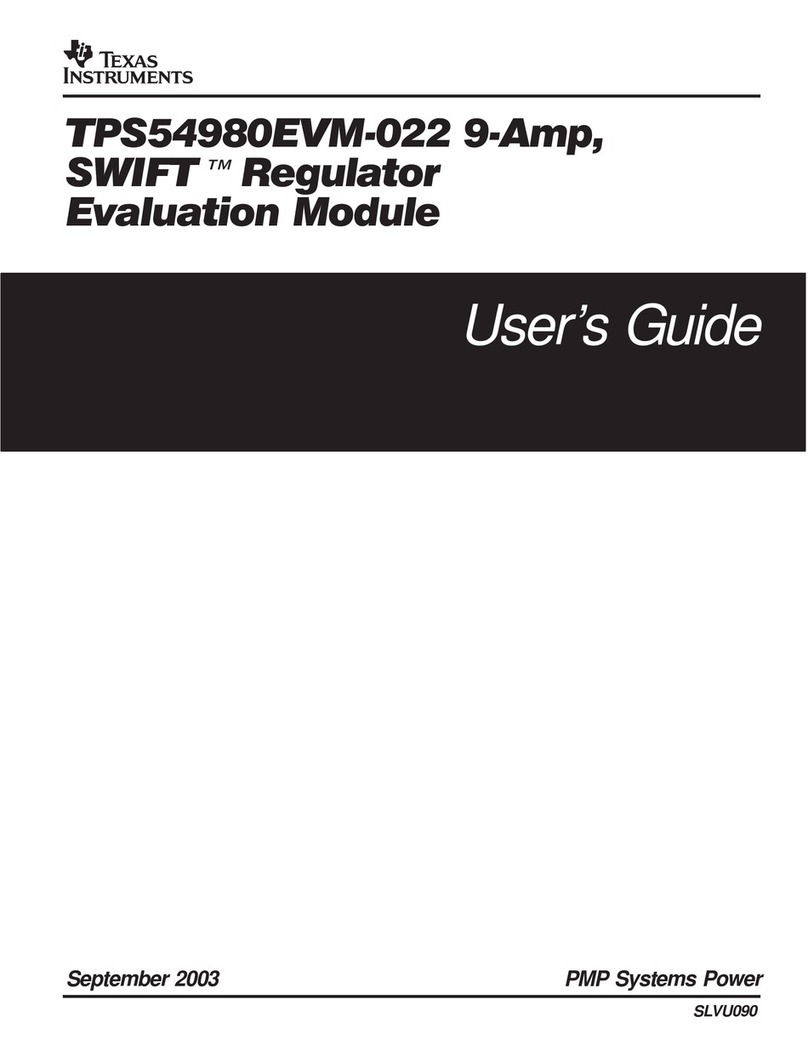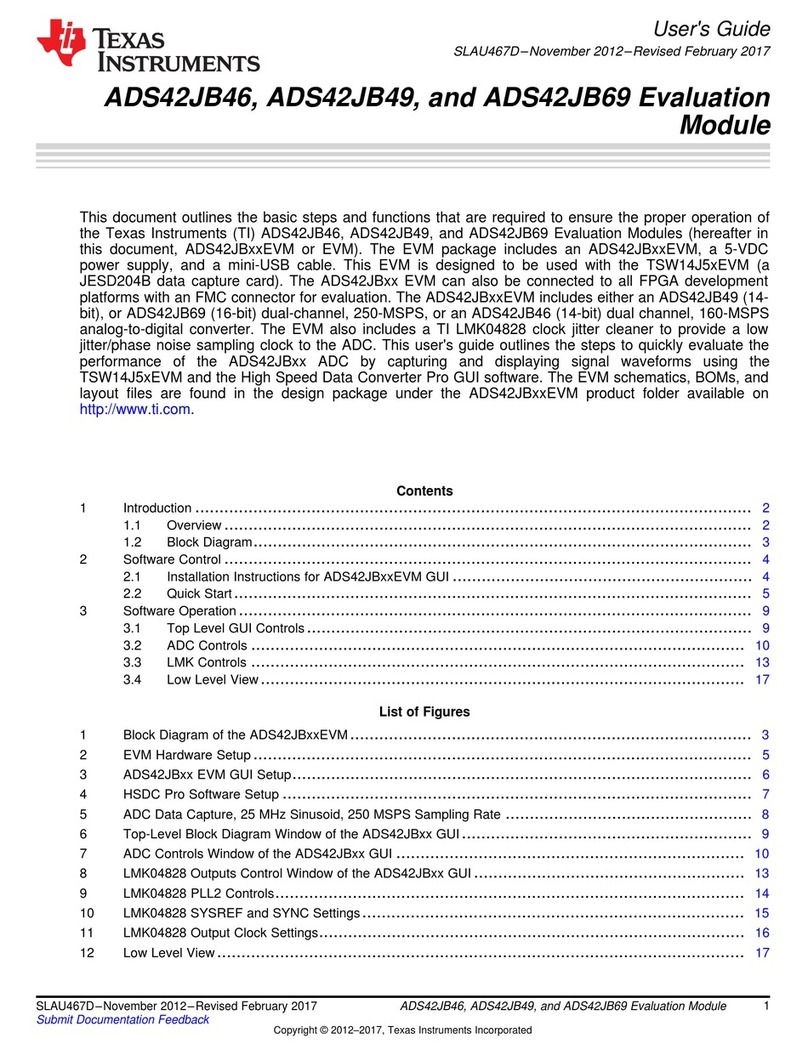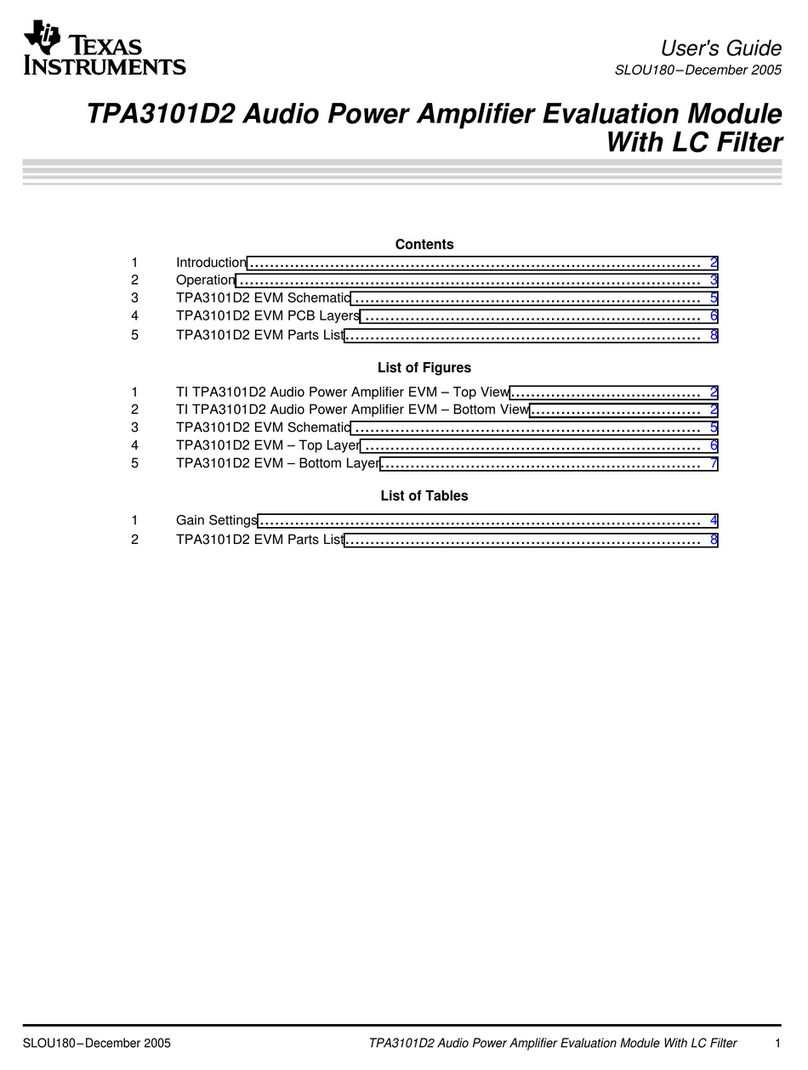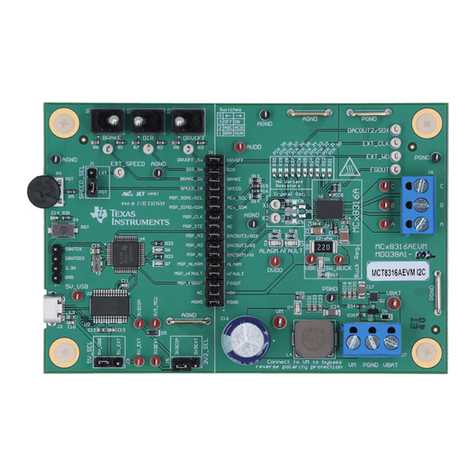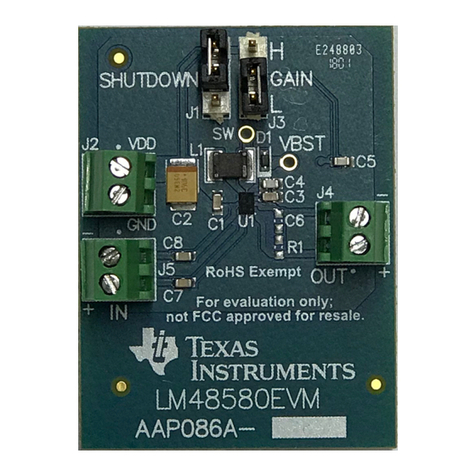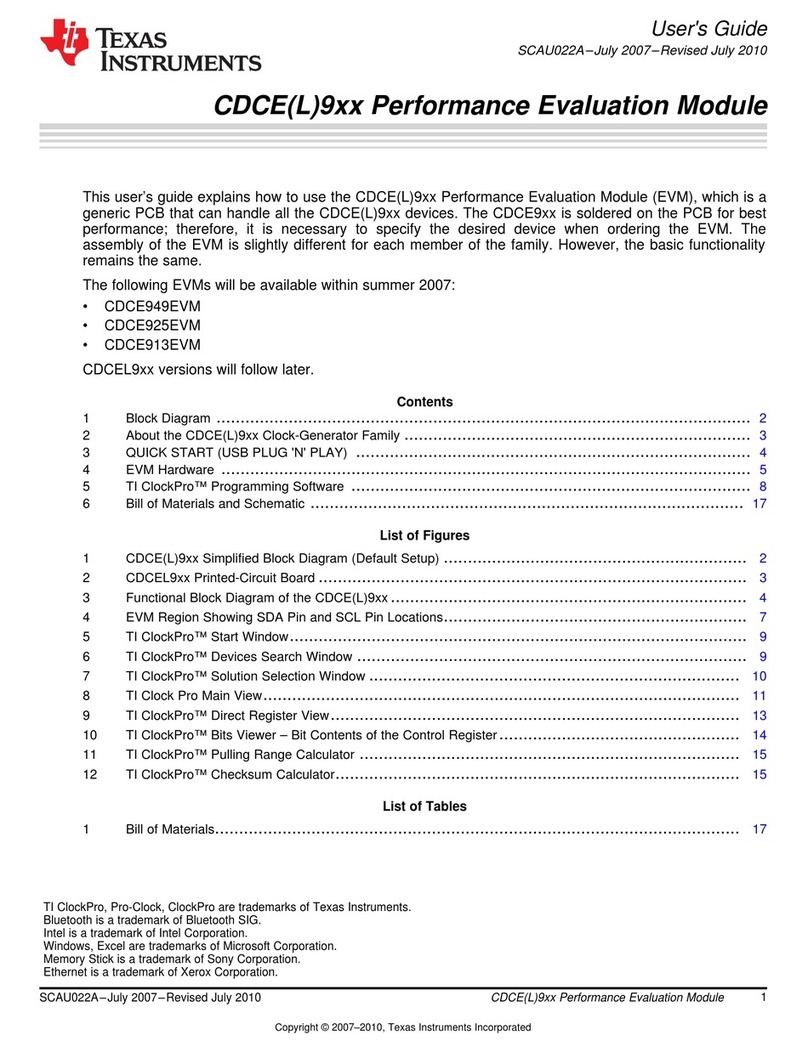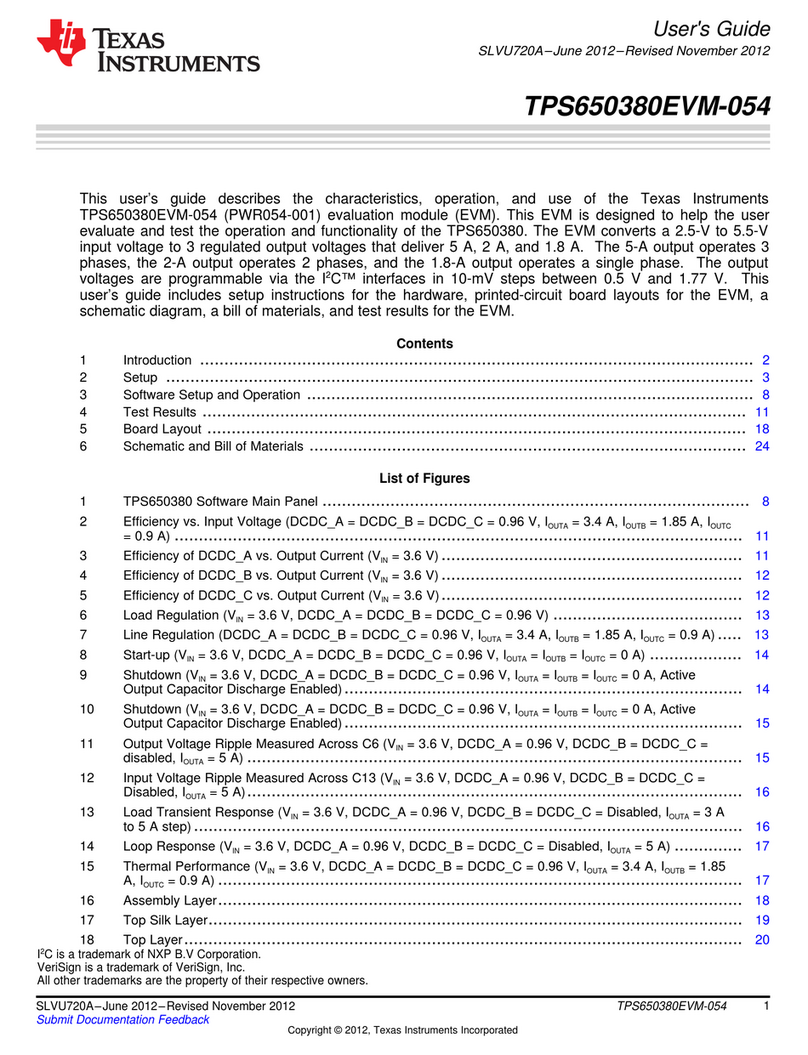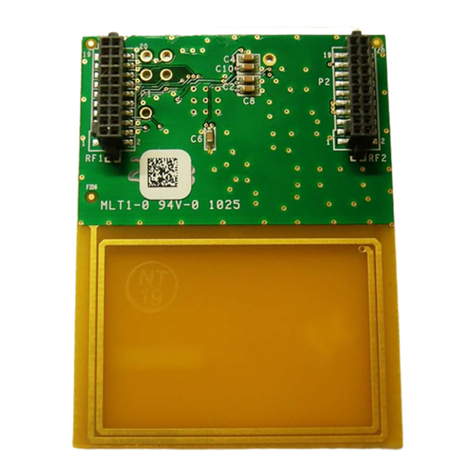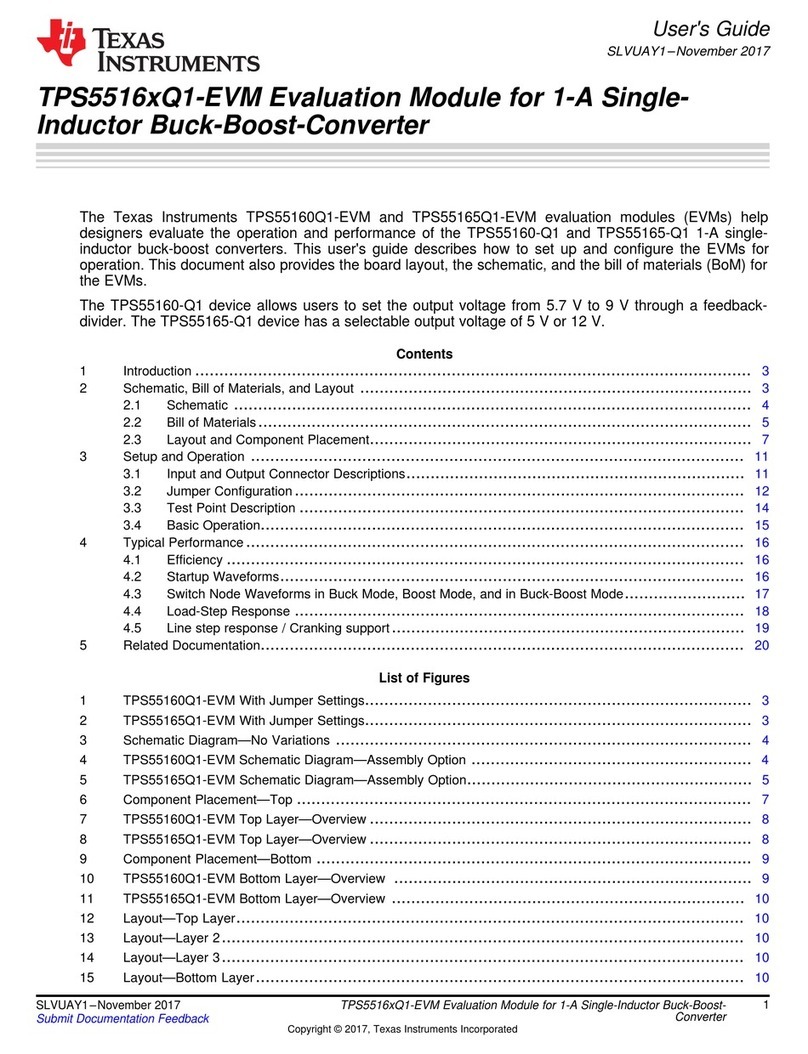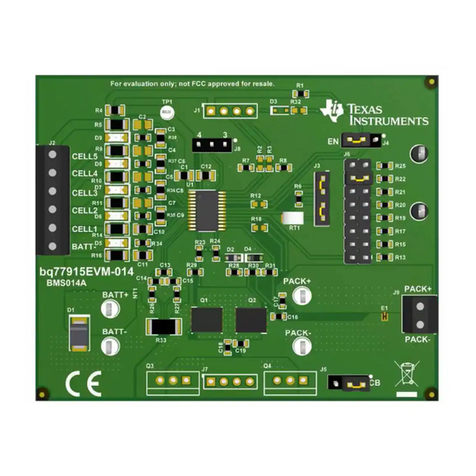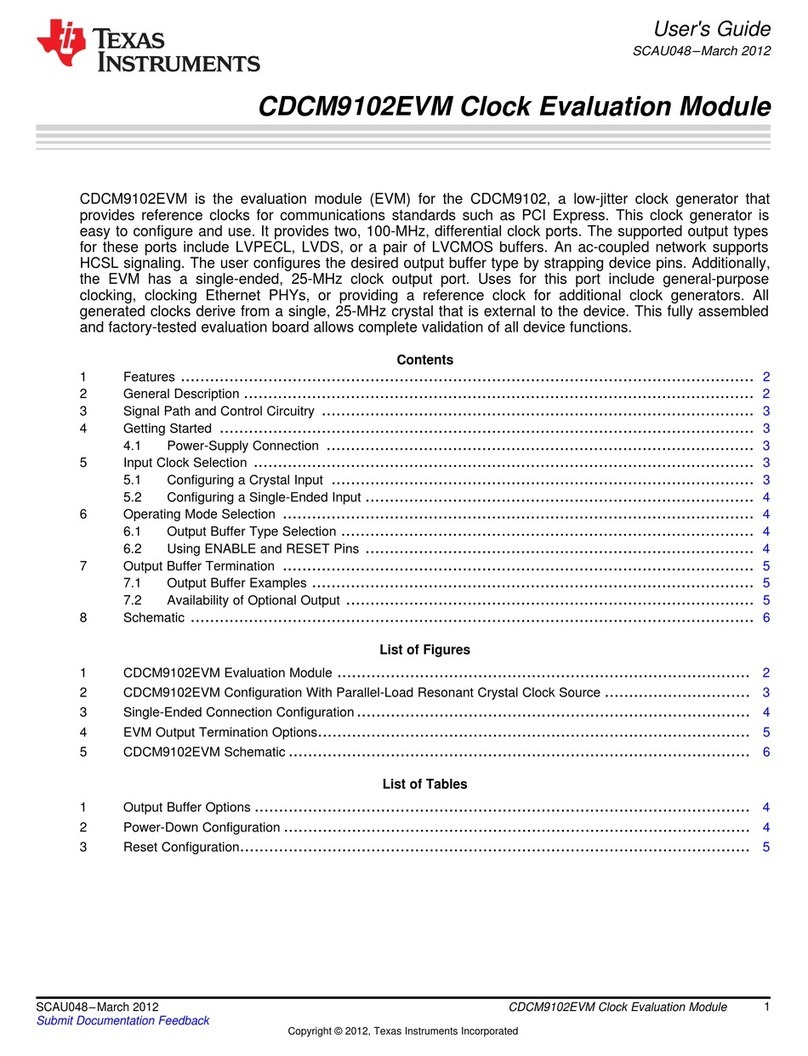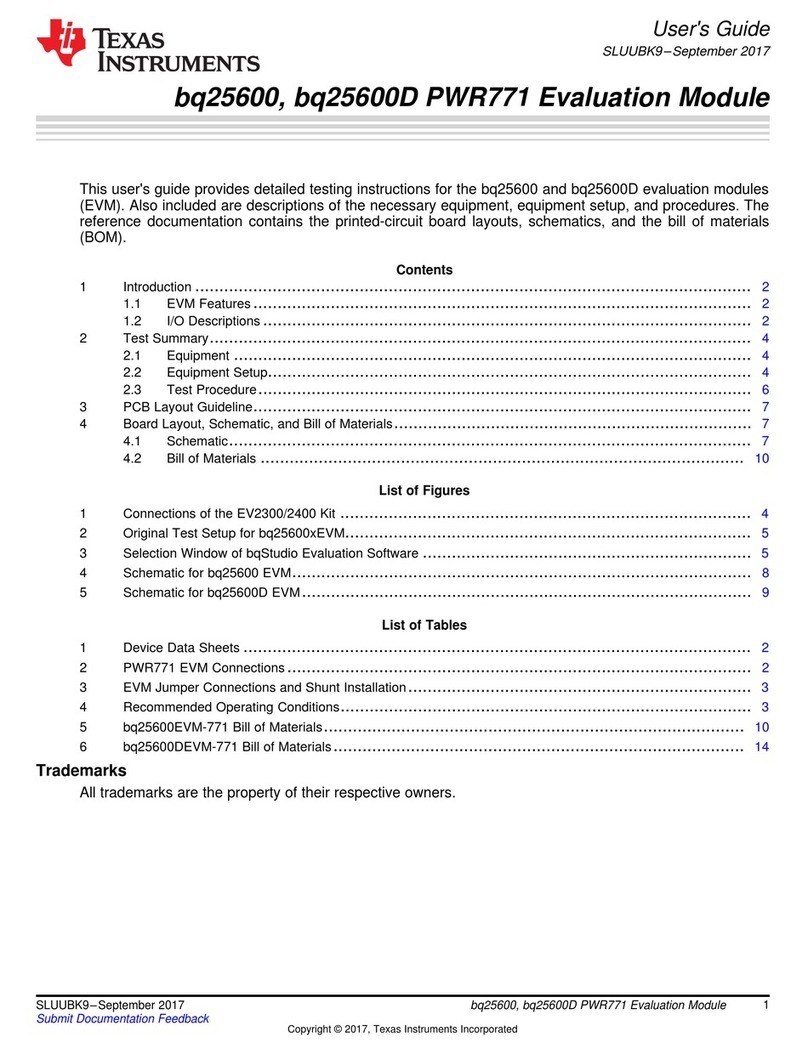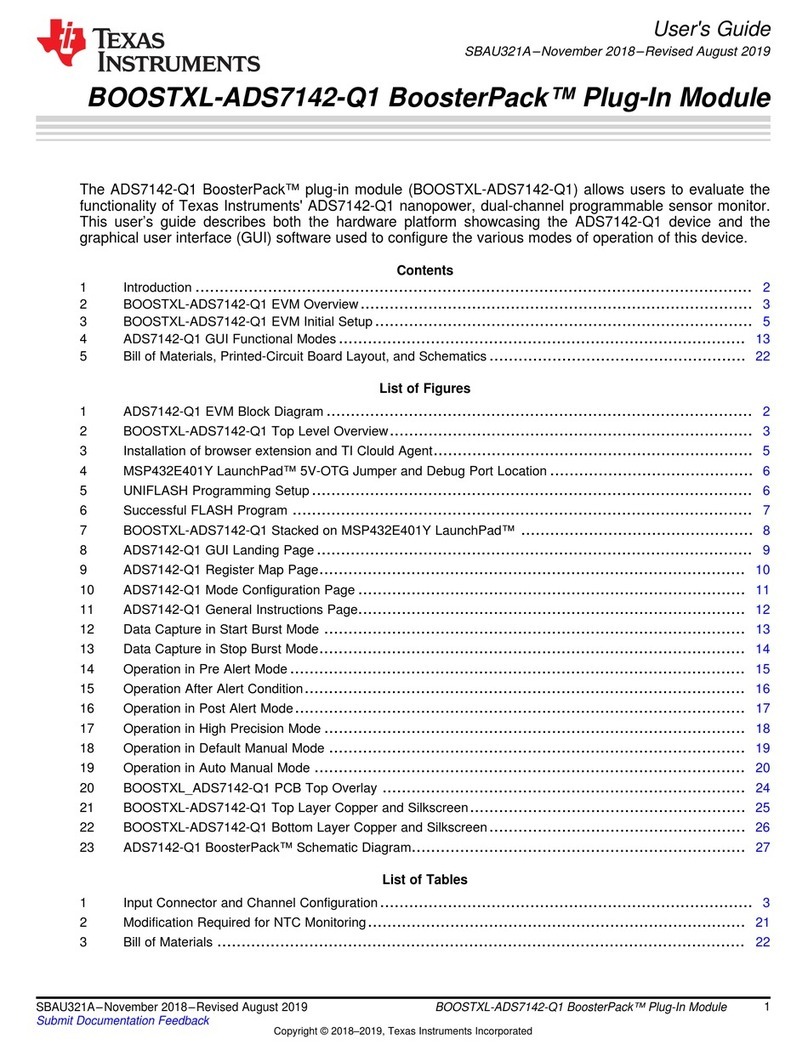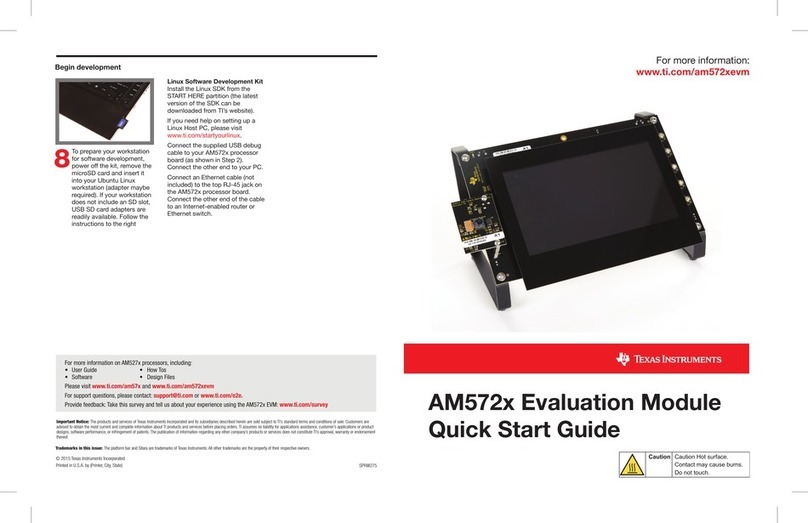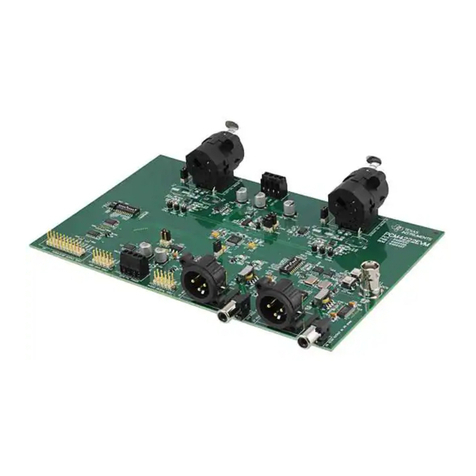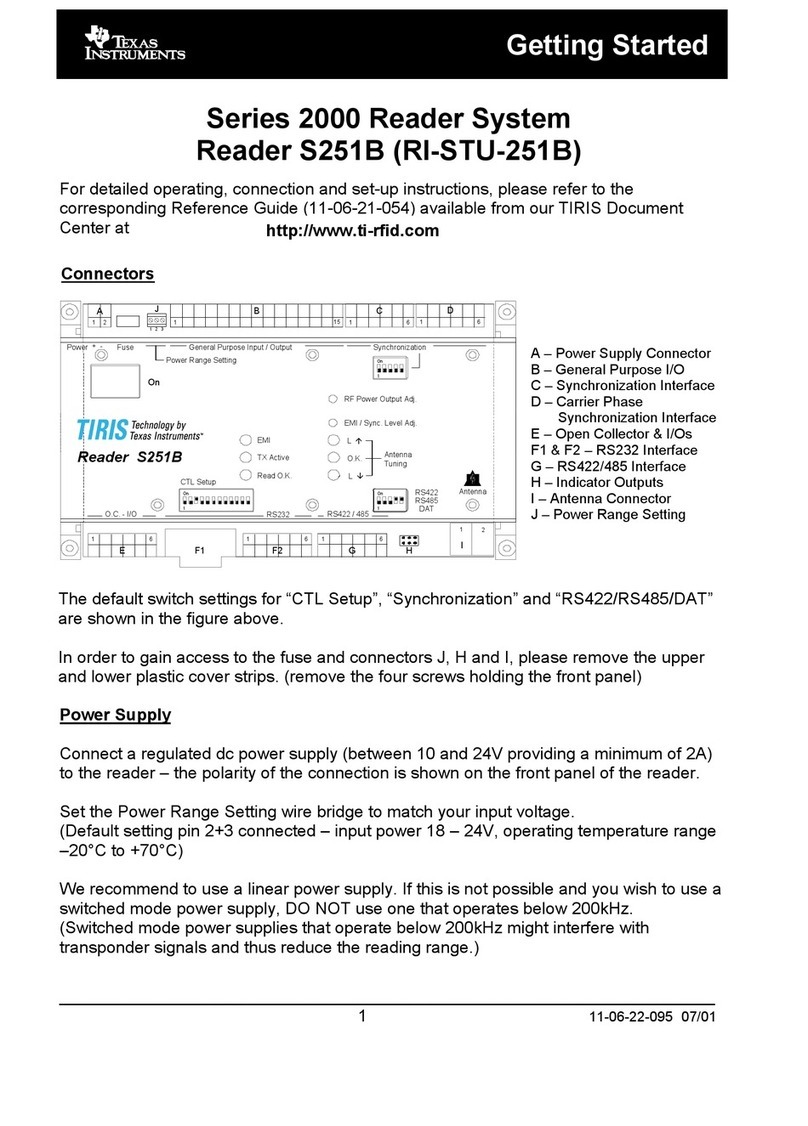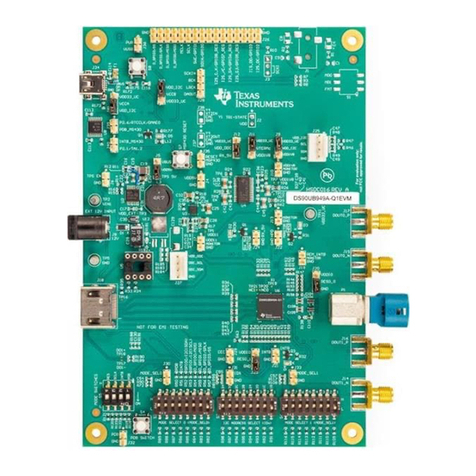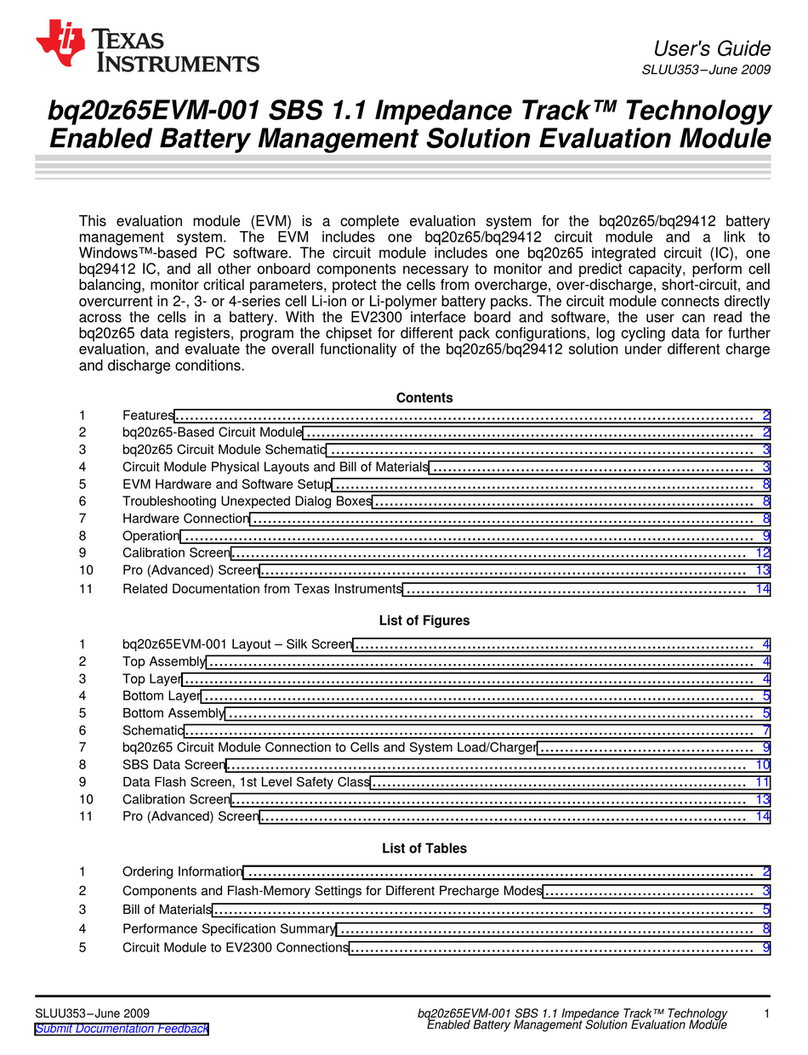
2.6.1 VBAT 2S EVM Hardware Configuration
This section shows how to set the EVM jumpers in order to evaluate TAS2574EVM in a 2 S battery application
for VBAT as depicted in Figure 1-2.
In this case, VBAT pin C1 must still be connected to a power supply range from 3 V up to 5 V, while VBAT_SNS
and the boost inductor can be connected to a higher 2 S supply range from 4.5V up to 9 V.
• VBAT pin C1 connection can be connected to USB-5V by changing J56 position to 2-3 instead of 1-2.
• VBAT_SNS pin C4 connection can be modified using J28, this connection is optional.
• 2 S VBAT supply is directly available at J30 (or J72) and J31 (or J73) for channel-1 and J55 (or J58) and
J3 (or J59) for channel-2. If using J43 to supply 2 S battery voltage, then make sure to change J45 to use
+5V_MB instead.
2.6.2 VBAT 3S EVM Hardware Configuration
This section shows how to set the EVM jumpers in order to evaluate TAS2574EVM in a 3 S battery application
for VBAT as depicted in Figure 1-3.
VBAT pin C1 must still be connected to a power supply range from 3 V up to 5 V. VBAT_SNS cannot be used
so VBAT_SNS must be shorted to GND. The internal boost is not used, so the SW pins are left floating and the
inductor can be removed from the circuit.
3 S battery supply range from VBAT pin C1 level up to 14 V is directly connected to PVDD node, the decoupling
capacitors and GREG capacitor are still required.
• VBAT pin C1 connection can be connected to USB-5V by changing J56 position to 2-3 instead of 1-2.
• VBAT_SNS pin C4 connection must be left as default with J28 shorted across pins 2-3.
• 3 S VBAT supply must be connected to J1 for channel-1 and J12 for channel-2, short the jumpers across J29
and J32.
2.7 1-Channel Configuration
When only one of the amplifiers on the TAS2574EVM is required, the other device can be completely isolated
from the circuit. This section includes instructions on how to disconnect U2, however the same procedure can be
applied to disconnect U1.
• The block of jumpers from J98 through J33 must be disconnected, as well as J57 and J52 in the same row.
This removes all digital signals and VBAT supply as well.
• J34 and J35 to the left of U2 must be disconnected as well. This removes IOVDD and AVDD supplies.
• J41 and J49 must be disconnected as well. This removes VBAT connection from J43 to the boost inductor.
2.8 4-Channel Configuration
Two dual-mono EVMs can be interconnected using J75 and J76 headers, mounting one EVM on top of another.
This enables the evaluation of a total of 4 audio channels.
When 2 EVMs are interconnected, the following jumper configuration must be considered:
• Short jumper J51 on one of the EVMs, this jumper is open by default.
• Open jumpers J19 and J20 on both EVMs, these jumpers are shorted by default.
In addition to the jumper configurations, make sure each amplifier is set for a different I2C address using S2 and
S3 on each EVM.
Hardware www.ti.com
10 TAS2574 Evaluation Module SLAU896 – JULY 2023
Submit Document Feedback
Copyright © 2023 Texas Instruments Incorporated
